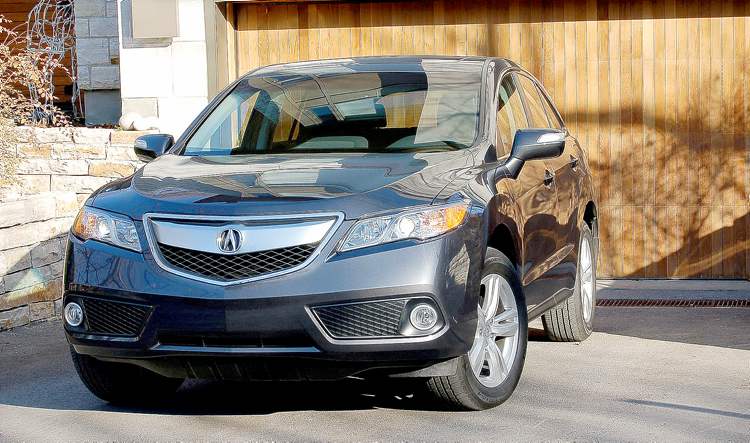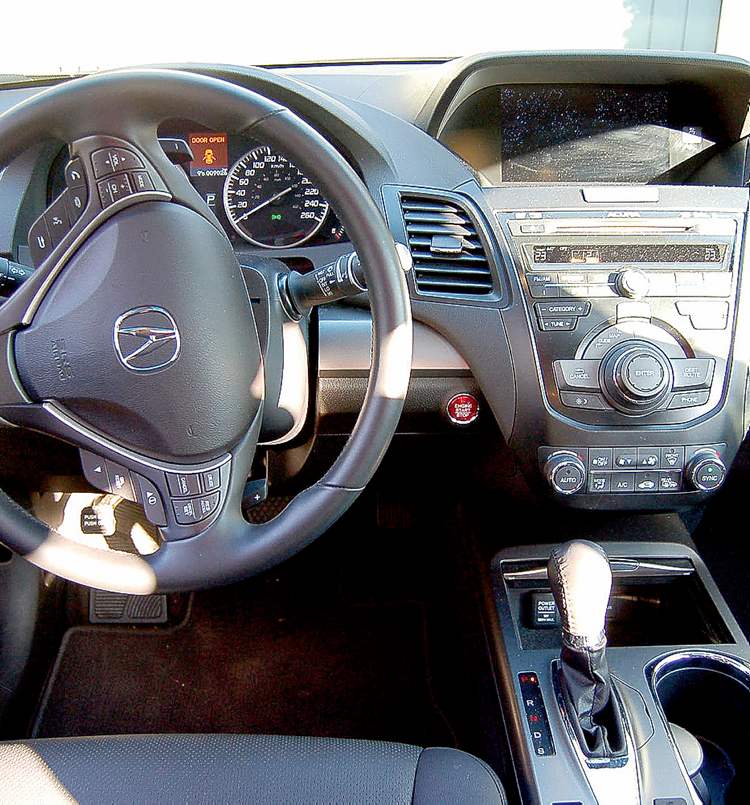2013 ACURA RDX: Back to the six-banger
New Acura RDX tosses four-cylinder turbo engine, bolsters performance
Advertisement
Read this article for free:
or
Already have an account? Log in here »
To continue reading, please subscribe:
Monthly Digital Subscription
$1 per week for 24 weeks*
- Enjoy unlimited reading on winnipegfreepress.com
- Read the E-Edition, our digital replica newspaper
- Access News Break, our award-winning app
- Play interactive puzzles
*Billed as $4.00 plus GST every four weeks. After 24 weeks, price increases to the regular rate of $19.00 plus GST every four weeks. Offer available to new and qualified returning subscribers only. Cancel any time.
Monthly Digital Subscription
$4.75/week*
- Enjoy unlimited reading on winnipegfreepress.com
- Read the E-Edition, our digital replica newspaper
- Access News Break, our award-winning app
- Play interactive puzzles
*Billed as $19 plus GST every four weeks. Cancel any time.
To continue reading, please subscribe:
Add Winnipeg Free Press access to your Brandon Sun subscription for only
$1 for the first 4 weeks*
*$1 will be added to your next bill. After your 4 weeks access is complete your rate will increase by $0.00 a X percent off the regular rate.
Read unlimited articles for free today:
or
Already have an account? Log in here »
Hey there, time traveller!
This article was published 12/04/2013 (4545 days ago), so information in it may no longer be current.
As the rest of the automotive world stampedes to small turbo engines, Acura is going the other way.
Instead of refining the stout and lively four-cylinder turbo engine that made the old RDX such a hoot to drive — an engine that was at least five years ahead of everyone else — Acura went and dumped that delightful four for a 273-horsepower V-6 in the 2013 RDX.
What were they thinking?

As a big fan of the old RDX (aside from its looks), I therefore received the new and much larger RDX test vehicle with a great deal of prejudice, clinging to those memories of brilliant acceleration and tremendous thrust from the old engine’s 260 pound-feet of torque.
How could this non-turbo V-6 with a lesser 251 lb.-ft. of torque match the muster of the old model? It seemed like trying to improve the taste of a good apple pie by using less butter.
But here we are in the new RDX with Tech package pulling hard and fast in the left lane past cars that for some unexplained reason are travelling 20 km/h below the speed limit. Travelling below the posted limit is more dangerous than going 20 km/h over the limit, but going at least 20 over is precisely what I found myself doing with unexpected regularity with the RDX’s new V-6.
So quickly does the torque roll out and so efficient is the new six-speed transmission that acceleration does not feel compromised in the slightest. Acceleration is now more linear, less rushed than before. Hammer the throttle at any speed and the RDX simply charges ahead confidently as though it’s making a point that it won’t be overshadowed by some pithy old turbo.
The old RDX may have been the Madonna of its age, but the new RDX is as lovely as Adele. It feels smoother, more natural and not the least bit unpleasant. I was sold on the new V-6 in a matter of hours.
Citing fuel economy as the reason it replaced the 2.3-litre for a 3.5-litre V-6, Acura notes the new RDX hits 100 km/h in 6.7 seconds. Of course, the reason the old engine got such lousy economy was because anyone who drove it became instantly addicted to the turbo’s torque and ended up squeezing the throttle whenever the opportunity arose, scooting about town like a 16-year-old with a freshly minted licence.
The new engine does indeed get better economy on paper, in part due to Honda’s cylinder deactivation, which allows the engine to run on three or four cylinders when all six aren’t needed. While the transition between cylinder operation is imperceptible, I still only managed to achieve 9.1L/100 km on the highway and not much better than 12.5L in the city. The official rating is 7.3 L/100 km highway, 10.7 city — and premium fuel is recommended.
The six-speed manumatic transmission helps reduce fuel use, shifting deliberately with a strong emphasis on providing a sporty feel — sometimes too sporty, making shifts noticeable even when the driver is trying to be smooth. Still, I liked this gearbox and appreciated the paddle shifters behind the wheel.
The slightly larger shape of the RDX — with an increased wheelbase and length but similar width — feels immediately roomier inside. Making access easier, the rear doors open almost at a 90-degree angle. The cabin is appreciably quiet at cruising speeds, thanks to “active sound control,” and the heated leather seats feel durable and comfortable.
The instrument cluster and centre stack isn’t as overdone with buttons and controls as other Acura models. The $3,000 technology package added a larger colour display with rear backup camera, navigation and good-sounding audio system to the $40,990 base price of the RDX.
However, the Bluetooth phone system drove me crazy by not letting me access my phone book while the vehicle was in motion — instead making me use voice commands that it frequently couldn’t understand. Please, Acura, I already have a mother.
Cargo space is not spectacular but useful, with 26.1 cubic feet of space behind the rear seats, which easily fold forward with one tug of a handle on either side to create almost 77 cubic feet. The rear hatch is also power-folding.
Handling leaned more to comfort than sport, and the electronic steering was impressively weighted, if not consistent. I couldn’t make up my mind whether I loved or loathed the steering, but suffice to say that Audi’s Q5 and BMW’s X3 have better feel.
The wider track and lower ride height make the new RDX feel almost as tossable as the old. The old model’s Super Handling AWD system that distributed torque to all four wheels at all times is now replaced by a system shared with the Honda CR-V. Torque now flows mostly to the front wheels, but can be split up to 75-25 biased to the front wheels when needed.

While the old system was one of the few that ever allowed me to get stuck in deep snow, many will argue it was superior due to its wider torque distribution and full-time operation. Acura says the new system is more fuel-efficient.
Indeed, the new RDX appears to be leaner in many ways. It’s lighter and equipped with enough modern technologies to realize true gains in fuel economy. It remains no less fun to drive and could almost replace its bigger sibling, the MDX, itself one of the most popular SUVs on the market.
Proving, perhaps, that Acura isn’t crazy after all.
— Postmedia News
THE SPECS
Type of vehicle: All-wheel-drive compact luxury SUV
Engine: 3.5L SOHC V-6
Power: 273 hp
Transport Canada fuel economy (L/100 km): 10.7 city, 7.3 hwy.
Base price/as tested: $40,990/$43,990
Destination charge: $1,945

